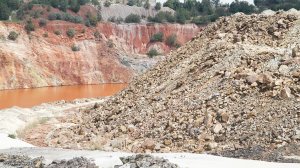The South African extractives industry, which is currently battling depressed commodity prices, is being subjected to increasingly stringent regulations, such as the Financial Provisioning Regulations (promulgated as General Notice Regulation (GNR) 1147) under the National Environmental Management Act (Nema), No 107 of 1998.
These regulations define the new disclosure and financial provision requirements for closure and rehabilitation liabilities, says Venmyn Deloitte environmental, social and governance manager Sarah Magnus.
“All operations make financial provision for remediation and closure activities. In the extractives industries, owing to the size and nature of operations, and their proximity to people, such provisions are substantial, often comprising between 10% and 30% of an operation’s value,” Magnus notes.
Historically, the requirements for provision for closure and remediation liability in South Africa were governed by Section 41 of the Mineral and Petroleum Resources Development Act, No 28 of 2002. The promulgation of GNR 1147 in November last year, however, has resulted in the disclosure and financial provision for such liabilities resulting from prospecting, exploration and mining operations now governed under Nema.
Most notably, GNR 1147 requires that an additional category of impacts – latent and residual impacts – be determined by mining companies.
Accordingly, there are now three categories of impacts for which a rights holder must make financial provision, namely rehabilitation and remediation; decommissioning and closure activities at the end of prospecting, exploration, mining or production operations; and remediation and management of latent or residual environmental impacts which may become known in future, including the pumping and treatment of polluted or extraneous water.
The provision for latent and residual impacts must be made by means of an additional trust fund – one which is separate to the first two categories.
“This means that the liability could be significantly bigger than what has been recognised to date.”
“Given the existing state of affairs of well-known latent residual impacts – such as acid mine drainage in the coal mining industry – associated with some of South Africa’s more prominent commodities, the potential financial ramifications placed on mining companies when funding such liabilities are significant.
“The [establish] of such impacts is often based on predictive processes and technologies, such as the environmental- and social-impact processes, which [establish] the duration, magnitude and severity of mining activities on social and environmental aspects,” Magnus explains.
Companies should, therefore, focus on which processes and technologies will be used to identify latent and residual impacts, as this has the potential to substantially influence a company’s balance sheet, she notes.
When determining the best approach to facilitate for rehabilitation fund performance, the potential risks of diversifying from cash to bonds and equity require careful consideration, in conjunction with various contributing factors, such as risk profiles of different investment instruments and portfolios, because of the long timeframes usually governing a rehabilitation fund.
“Rehabilitation fund trustees might be tempted to employ a conservative, liability- agnostic investment strategy using a limited combination of highly secure, but suboptimal, investment types. This exposes the trust fund to the risk of income and liability mismatching, below-par returns and potential over- or underfunding in the long term,” Magnus comments.
Trustees need to carefully examine better ways of funding contributions when determining accurate liability fund investments. Assessing current asset allocation, while considering the desired future performance, will provide a sound basis from which to determine the best port- folio for optimal results.
Two key areas need to be considered when deriving an appropriate funding strategy, says Magnus.
Firstly, the technical aspects that influence the quantum must be considered. These include closure and rehabilitation statutory requirements, the completeness and adequacy of the existing closure planning frameworks and associated engineering solutions, the availability of technical standards and practices informing best practices, as well as the availability and adequacy of specialist technical reports.
Secondly, significant consideration of the parameters is needed to determine the best strategy for the portfolio.
This includes strategies that are structured to ensure the appropriate and adequate funding of closure and rehabilitation trusts to reduce the risk of a funding shortfall on mine closure.
Magnus also emphasises capitalising on returns earned on funds invested in by the trust to decrease the contributions required, while taking into consideration the risk profile of investment instruments and guarding against fund overinvestment and possible opportunity costs.
Efficient environmental engineering solutions must be combined with prudent financial investment solutions, she says.
“ . . . [A]n effective environmental engineering solution comprises technical competence, a comprehensive understanding and the characterisation of the aspects, including dimensional aspects for which the solution is designed and an approach that considers the legal frameworks within which the solution is proposed.”
She further highlights the consideration of recognised good international industry prac- tices and their integration into the solution.
The transitional arrangements require all mining companies to adhere to the requirements of GNR 1147 within three months of their financial year-end, following the coming into effect of GNR 1147 and annually thereafter; or within 15 months after the coming into effect of GNR 1147 and annually thereafter.
Edited by: Tracy Hancock
Creamer Media Contributing Editor
EMAIL THIS ARTICLE SAVE THIS ARTICLE
To subscribe email subscriptions@creamermedia.co.za or click here
To advertise email advertising@creamermedia.co.za or click here















